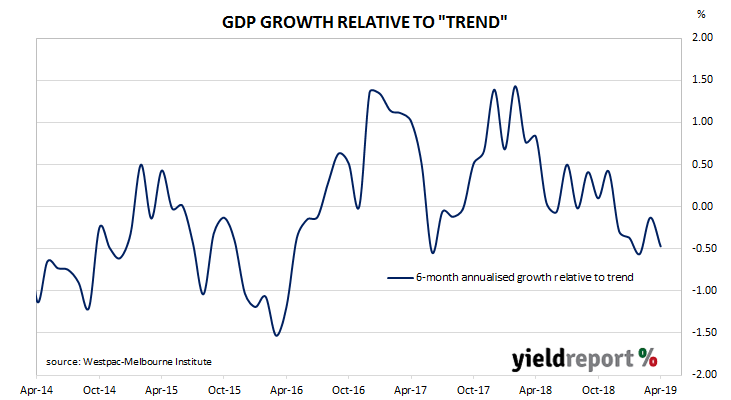Westpac and the Melbourne Institute describe their Leading Index as a composite measure which attempts to estimate the likely pace of Australian economic activity relative to trend over the next three to six months. Since its peak in early 2018, the index had progressively headed lower through 2018 and into 2019. The latest figures have not deteriorated any further but they indicate GDP is likely to remain below trend in coming quarters.
The six-month annualised growth rate of the indicator fell back from March’s revised figure of -0.13% to -0.47% in April. These figures represent rates relative to trend-GDP growth, which is generally thought to be around 2.75% per annum. The Index is said to lead GDP by 3 months to 6 months, so theoretically the current reading represents an annualised GDP growth rate of around 2.25% in late-2019.

The index combines certain economic variables which are thought to lead changes in economic growth into a single variable. Westpac views this variable as a reliable cyclical indicator for the Australian economy and an indicator of swings in Australia’s overall economic activity.
Westpac chief economist Bill Evans re-iterated his comments in recent months regarding the likely rate of GDP growth in 2019. “The Index growth rate has been consistently negative over the last five months, a clear signal that economic growth through the three quarters of 2019 is likely to be below trend.” He is expecting just 2.2% GDP growth for the 2019 calendar year.

